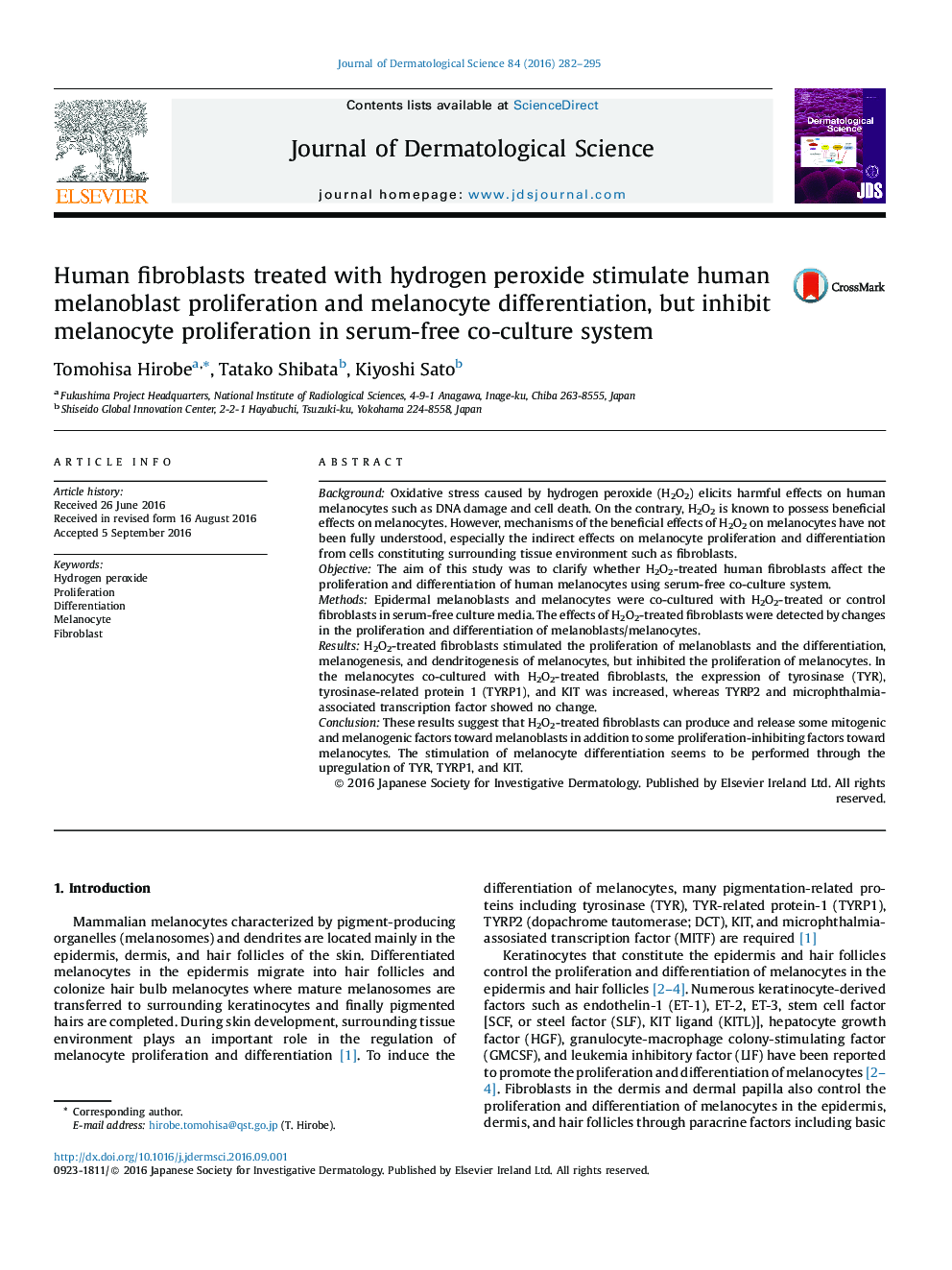| Article ID | Journal | Published Year | Pages | File Type |
|---|---|---|---|---|
| 5648868 | Journal of Dermatological Science | 2016 | 14 Pages |
â¢H2O2-treated fibroblasts (F) stimulated melanoblast proliferation and differentiation.â¢H2O2-treated human F inhibited human melanocyte proliferation.â¢The expressions of tyrosinase, tyrosinase-related protein 1, and KIT were increased.â¢H2O2-treated F may produce some melanoblast-mitogenic and -melanogenic factors.â¢H2O2-treated F may produce some melanocyte-proliferation-inhibiting factors.
BackgroundOxidative stress caused by hydrogen peroxide (H2O2) elicits harmful effects on human melanocytes such as DNA damage and cell death. On the contrary, H2O2 is known to possess beneficial effects on melanocytes. However, mechanisms of the beneficial effects of H2O2 on melanocytes have not been fully understood, especially the indirect effects on melanocyte proliferation and differentiation from cells constituting surrounding tissue environment such as fibroblasts.ObjectiveThe aim of this study was to clarify whether H2O2-treated human fibroblasts affect the proliferation and differentiation of human melanocytes using serum-free co-culture system.MethodsEpidermal melanoblasts and melanocytes were co-cultured with H2O2-treated or control fibroblasts in serum-free culture media. The effects of H2O2-treated fibroblasts were detected by changes in the proliferation and differentiation of melanoblasts/melanocytes.ResultsH2O2-treated fibroblasts stimulated the proliferation of melanoblasts and the differentiation, melanogenesis, and dendritogenesis of melanocytes, but inhibited the proliferation of melanocytes. In the melanocytes co-cultured with H2O2-treated fibroblasts, the expression of tyrosinase (TYR), tyrosinase-related protein 1 (TYRP1), and KIT was increased, whereas TYRP2 and microphthalmia-associated transcription factor showed no change.ConclusionThese results suggest that H2O2-treated fibroblasts can produce and release some mitogenic and melanogenic factors toward melanoblasts in addition to some proliferation-inhibiting factors toward melanocytes. The stimulation of melanocyte differentiation seems to be performed through the upregulation of TYR, TYRP1, and KIT.
